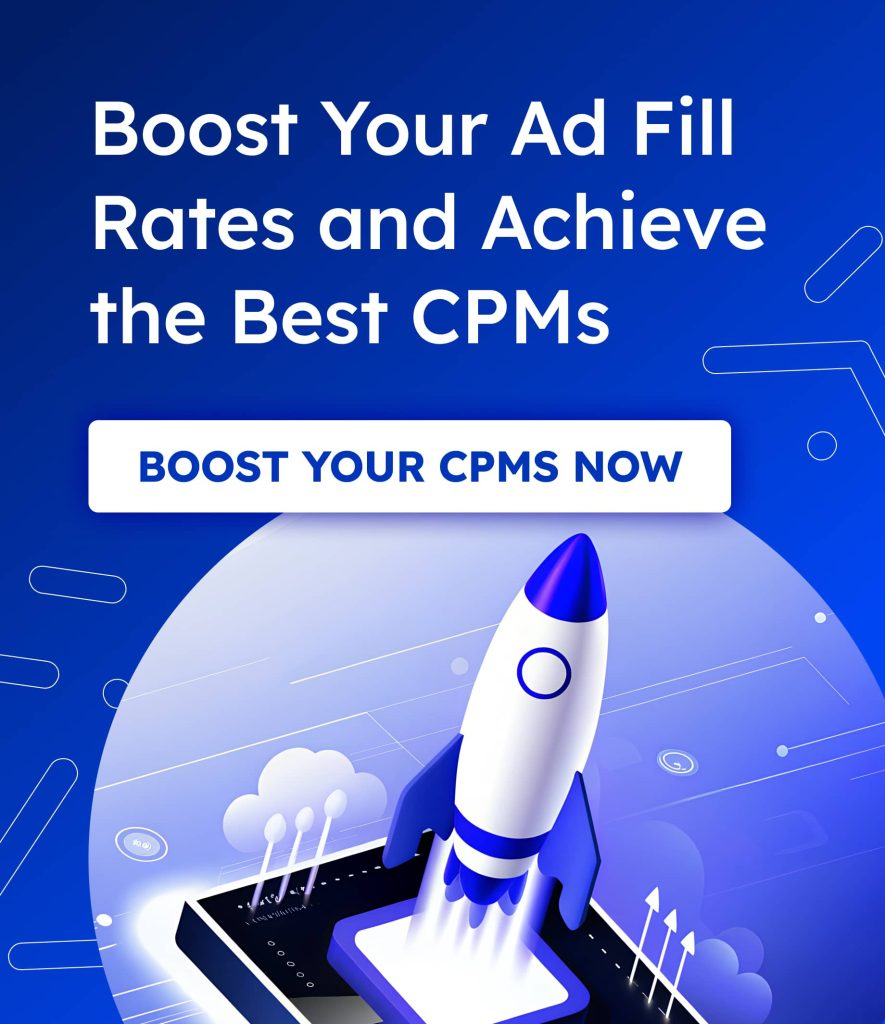Understanding key metrics is critical for publishers seeking to maximize their ad revenue. Two of the most important terms in the digital advertising world are CPM (Cost Per Mille) and RPM (Revenue Per Mille). While both are essential for evaluating performance, they serve different purposes. In this guide, we’ll explore what CPM and RPM mean, how they’re calculated, and how publishers can optimize these metrics to boost earnings.
What is CPM (Cost Per Mille)?
CPM, or Cost Per Mille, is the cost an advertiser pays for 1,000 ad impressions on a publisher’s platform. It’s one of the most commonly used pricing models in digital advertising.
Formula to Calculate CPM:

Example:
If an advertiser spends $200 for 50,000 impressions, the CPM would be:

CPM is a useful metric for advertisers to understand the cost of reaching their audience and for publishers to evaluate the value of their inventory.
What is RPM (Revenue Per Mille)?
RPM, or Revenue Per Mille, measures how much revenue a publisher earns for every 1,000 page views or impressions. Unlike CPM, which reflects advertiser costs, RPM highlights the publisher’s revenue efficiency.
Formula to Calculate RPM:

Example:
If a publisher earns $100 from 20,000 page views, the RPM would be:

Key Difference: While CPM focuses on what advertisers spend, RPM focuses on what publishers earn, offering a better view of overall monetization efficiency.
Key Differences Between CPM and RPM

How CPM and RPM Impact Publishers
- CPM:
- Higher CPM rates indicate premium ad inventory or high-demand ad placements.
- CPM is often influenced by factors like audience demographics, engagement levels, and ad format.
- RPM:
- High RPM indicates strong overall monetization across all ads on a page.
- It’s influenced by fill rates, click-through rates (CTR), and the diversity of ad formats.
Insight: According to eMarketer, publishers optimizing for RPM typically see a 20-30% increase in overall revenue compared to focusing solely on CPM.
How to Optimize CPM and RPM
- Improve Audience Targeting:
- Delivering ads to highly engaged and relevant audiences increases CPM rates.
- Behavioral and contextual targeting ensures higher-quality impressions. Platforms like Google Ad Manager enable advanced targeting options.
- Experiment with Ad Formats:
- Use high-performing formats such as video ads or native ads to boost CPM.Diversify ad placements to maximize RPM across different inventory types.
- Leverage Header Bidding:
- Header bidding creates competition among demand partners, driving up CPM rates.
- Platforms like Prebid.org offer open-source solutions for seamless header bidding integration.
- Enhance Page Speed and User Experience:
- Slow-loading pages deter advertisers and lower RPM.
- Use tools like Google PageSpeed Insights to improve load times and increase engagement.
- Optimize Ad Placement:
- Place ads in high-visibility areas such as above-the-fold or within engaging content.
- Monitor click-through rates to identify and improve underperforming placements.
- Monitor and Adjust Pricing Strategies:
- Use dynamic pricing models to adjust CPM rates based on demand and seasonality.
- Analyze performance data regularly to refine pricing strategies.
How WaardeX Supports CPM and RPM Optimization
WaardeX provides publishers with the tools to maximize both CPM and RPM:
- Real-Time Bidding: Ensures premium CPM rates by attracting top-tier advertisers.
- Comprehensive Analytics: Detailed dashboards help publishers track RPM across ad formats and placements.
- Multi-Device Support: Optimize ad performance across desktop, mobile, and in-app platforms.
Did You Know? Publishers using WaardeX’s advanced targeting tools experience 30% higher RPM, thanks to better audience segmentation and demand optimization.


Conclusion: The Importance of Balancing CPM and RPM
Both CPM and RPM are essential metrics for publishers looking to maximize revenue. While CPM measures the value of individual impressions, RPM provides a holistic view of overall monetization.
By optimizing audience targeting, experimenting with ad formats, and leveraging tools like WaardeX, publishers can strike the perfect balance between these metrics, ensuring sustainable growth.
For more tips, explore PubMatic’s Revenue Optimization Guide or check out Google’s resources on ad performance.
